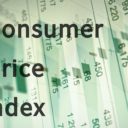The American people now have more reason to believe the Fed’s money-printing policy is hitting them where it hurts, their pockets. U.S. consumer prices across-the-board posted their largest increase in more than a year in the month of May, as inflation pressures fueled by fiat money begin to manifest.
The Labor Department said on Tuesday its Consumer Price Index gained 0.4 percent last month, with food prices posting their largest increase since August 2011. The data continues a disturbing trend under the Obama administration, which presided over the largest increase in inflation since the Great Depression.
The Federal Reserve will no doubt claim that inflation was running too low, because the main inflation gauge outlined by the Fed continues to run below the U.S. central bank’s 2 percent target. However, the Fed’s policy disproportionately benefits the investor class over the average American, who continue to see their saving and purchasing power erode as the Fed prints more and more fiat money.
Fed officials start a two-day policy meeting on Tuesday, and they are expected to further trim the monthly bond buying program, marginally. Yet, they will put off raising interest rates until at least mid-2015, though they have pushed the date farther back several times.
Last month’s increase in consumer prices was the largest since February 2013 and above economists’ expectations for a 0.2 percent gain, up from a 0.3 percent gain in April.
Over the last 12 months through May, consumer prices gained 2.1 percent, which was the biggest increase since October 2012. Further, a 2.0 percent gain measured in April was above economists’ expectations for a year-on-year increase of 2.0 percent.
Excluding food and energy prices, two of the biggest expenses for everyday Americans, the so-called core CPI rose 0.3 percent, also the largest gain since August 2011. It had increased by 0.2 percent in April, and over the 12 months through May, the core CPI increased by 2.0 percent. That was also the largest increase since February, 2013, and came after a 1.8 percent rise in April.
Economists had forecast the core CPI would increase by 0.2 percent from April and 1.9 percent from 1 year-ago.
Meanwhile, food prices increased again by 0.5 percent in May, adding to an already expensive burden for American families for a fifth consecutive month. Prices for meat, dairy, fruit and vegetables rose at roughly the same pace, while poultry, fish and eggs all rose.
Gasoline prices, which are expected to shoot up due to the situation in Iraq, increased by 0.7 percent. Prices for electricity also rose after declining in the prior month.
There were also increases in medical care costs, clothing apparel, new cars prices and airline prices. The core CPI increase in large part due to a 0.3 percent rise in rent.




